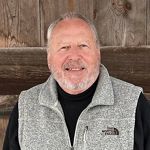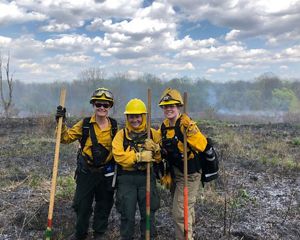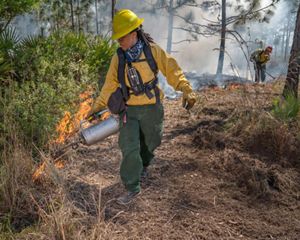10 Questions About Prescribed Fire, Answered
Prescribed fire, also known as a controlled burn, is a tool used by land managers to restore habitats and reduce out-of-control wildfires.
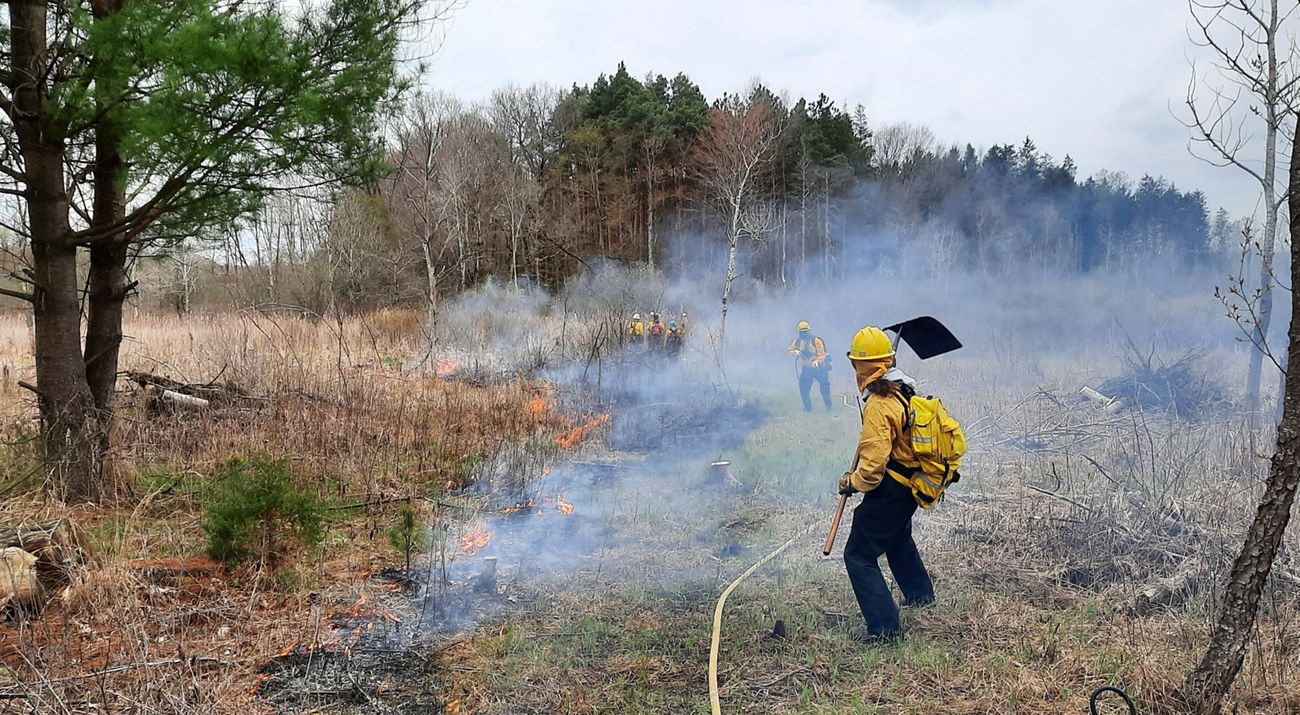
1. What is a prescribed fire?
Prescribed fires, or controlled burns, are fires that are purposefully implemented by land managers with the goal of restoration. Some habitats are fire-dependent—meaning they require fire to meet the needs of their inhabitants and preserve biodiversity. Prairies, meadows, wetlands, rivers, streams and forests are all ecosystems that need fire in order to flourish.
2. Why are prescribed fires necessary?
For more than a century, suppressing natural fire was a standard practice resulting in the accumulation of material—like branches and dead trees—that can fuel larger fires. However, in some systems, small fires at regular intervals used to be a normal occurrence and provided significant benefits to the ecosystem. By mimicking natural fire, controlled burns help reintroduce fire to landscapes in a way that limits its impact on surrounding communities.
Controlled burns are about more than preventing wildfires. Many species rely on fire to produce recycled nutrients and encourage healthy ecosystems. The fruits or cones of some plant species are activated by fire, allowing their fruits to spring forth and the plant to grow. It's also used to address invasive species, clearing them out and making room for native plants to take their place.
Prairie Fen: A Fire-Dependent Habitat
A prairie fen is a rare type of wetland that receives water from cold, underground springs rich in minerals instead of from rainwater. Found in the Midwest, it gets its name from the many plant species it shares with tallgrass prairies. Prairie fens rely on natural disturbances—such as fire—to help maintain plant communities and sustain wildlife.
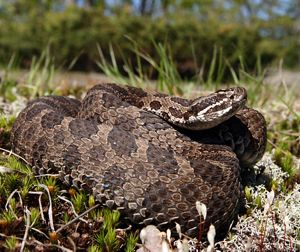

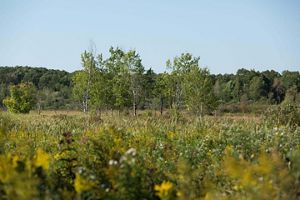
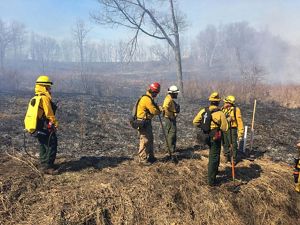
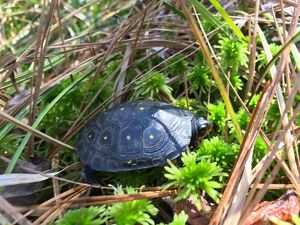

Eastern Massasauga: The eastern massasauga is a rare wetland species. © Ryan M. Bolton/Shutterstock.com

Mitchell's Satyr: The Mitchell's satyr butterfly is a rare species that lives in fens. © Elyse Hossink/TNC

Prairie Fen: Fens are home to a variety of plant species. © Jason Whalen/Big Foot Media

Prescribed Fire: A prescribed fire at the Ives Road Fen Preserve in Southern Michigan. © Chris May/TNC

Spotted Turtle: Spotted turtles are impacted by poaching and habitat loss. © Chase McLean/TNC
3. What happens to the land after a controlled burn?
Think of a controlled burn as a whiteboard. Over time, as you write and erase, write and erase, colors begin to accumulate on the board, until finally, you spray it down and wipe it clean. Now, you have a blank slate. Prescribed fire is similar. Habitats are constantly growing, accumulating plants, fallen trees and other debris that impact growth. When a controlled burn is conducted, it clears all of that away and allows the landscape to begin fresh—mimicking the role of natural fire. Quickly, within weeks, life will begin to return. Native plants will flourish, their seeds activated by the heat of the fire. Flowers will spring up, no longer crowded out and shaded out by invasive species. A rare snake will slither through all of this new growth.
4. What is a burn boss?
Burn bosses are individuals who are certified to plan, organize and execute prescribed fires. They draft a plan that outlines the goal of the burn, how it will be conducted and what safety measure are needed, and they make the final call as to whether or not the burn will take place. The road to becoming a burn boss isn't simple. They go through rigorous training and a variety of certifications before they are able to lead a burn. The same can be said for all fire managers. Different levels of training and certification determine roles within a burn crew.
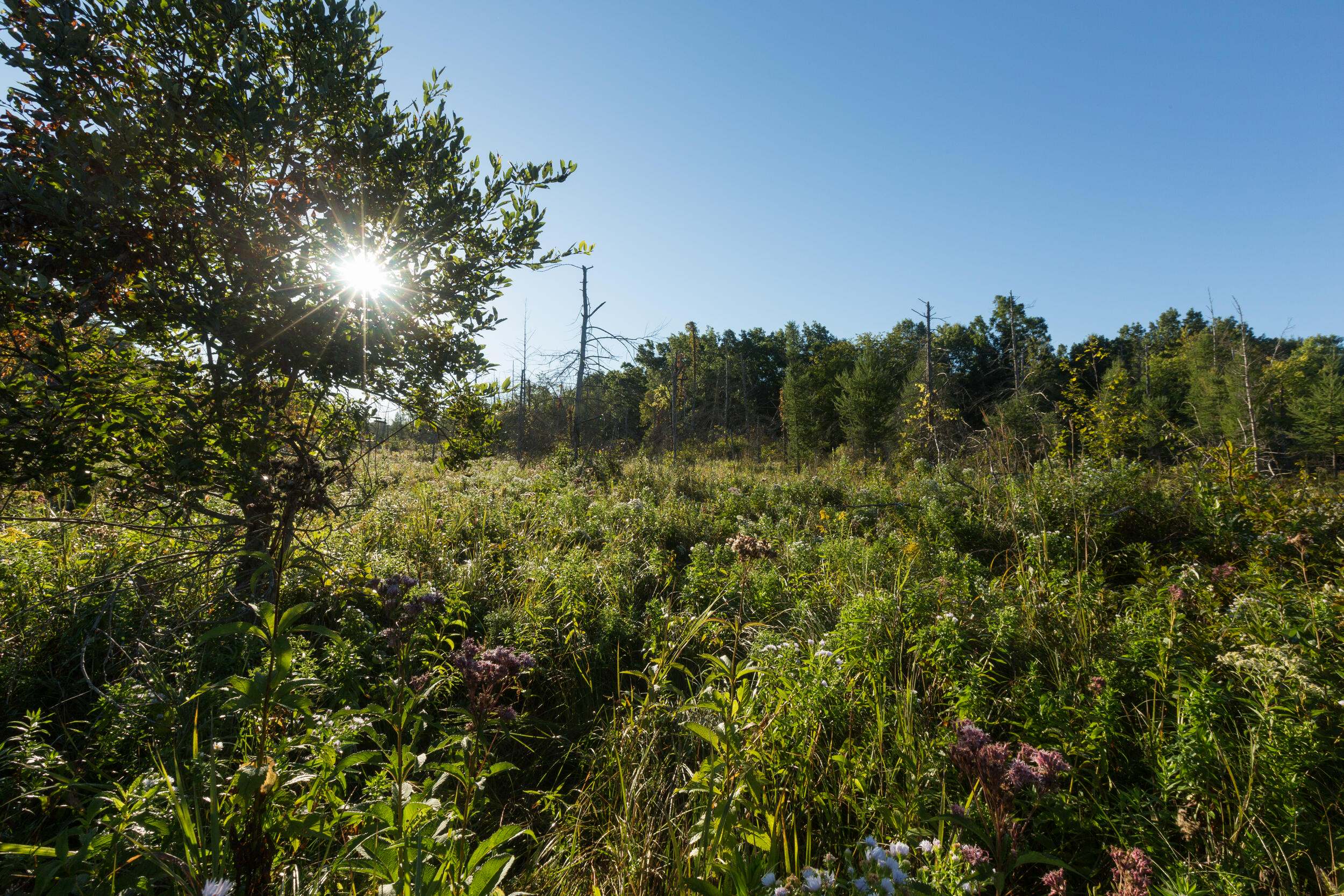
5. How are prescribed fires controlled?
With prescribed fires, it's all about timing and planning. A burn boss follows very specific parameters when leading fire managers through a controlled burn. To maintain a low-intensity fire, everything from the weather to the state of the area are assessed to ensure the burn will not impact the public. On the day of a burn, a shift in the wind or change in humidity are enough to cancel a planned burn.
6. How do you plan for a prescribed fire?
Numerous factors influence how and when a burn should be implemented. Everything from humidity to the maximum wind speed on a given day has an effect and must be taken into careful consideration. The burn plan, writen by the burn boss, is a detailed document outlining the purpose of the burn, site information, a description of the area (like fuel types and topography), pre-burn factors (like weather and crew size), contingency plans, what criteria could cancel a burn and a fire suppression plan.
Beyond the written plan, each burn site must have all the tools needed to conduct and suppress the burn. Everyone on site the day of the burn must be certified and assigned a specific task.

7. How long does a controlled burn take?
The length of a controlled burn varies per the goals of the land and conditions in the area. While most burns last only a day, some extend for multiple days. Multiple burns may also occur on the same property over a season.
8. What is the best time to do a prescribed fire?
Conducting controlled burns in fall and spring helps prevent major fire events from occurring during warmer, dryer months, when overgrowth acts as kindling, igniting out-of-control wildfires.

9. Are prescribed fires good or bad?
Just like the prescription medications you take, there are positive and negative effects of prescribed fire. Prescribed fire helps land managers control fires while still encouraging the many benefits they offer the land. But no matter how it is started, fire is still dangerous. While uncommon, prescribed fires can get out of control and pose a risk to the safety of land managers.
10. What are examples of prescribed fire?
Two types of prescribed fire are broadcast burning and pile burning. When conducting a broadcast burn, you light a fire across an area of land. With pile burning, you move vegetation into piles and burn them. This is commonly done with remnants of a logging operation or when conditions are too challenging to conduct a broadcast burn.


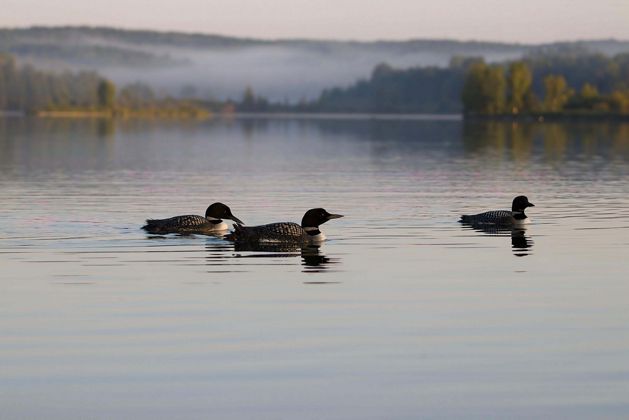
Nature in Your Inbox
Get the best nature stories, news and opportunities delivered monthly.
